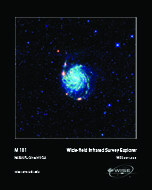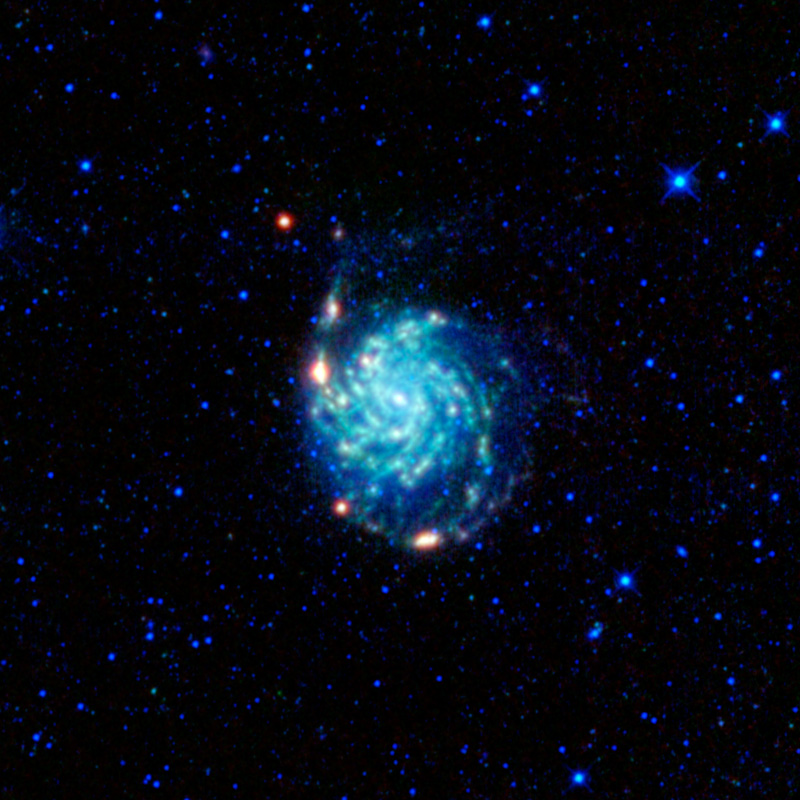



|
July 21, 2011 - Messier 101: The Pinwheel Galaxy A large spiral galaxy dominates this view from NASA’s Wide-field Infrared Survey Explorer, or WISE. The galaxy, often called the Pinwheel galaxy, was designated object 101 in astronomer Charles Messier’s catalog of fuzzy things in the sky that are not comets. Stargazers can find the galaxy with a pair of binoculars in the constellation Ursa Major (the Great Bear). It is located about 3.5 degrees east of the double stars Alcor & Mizar, the bend in the handle of the famous asterism the Big Dipper (an asterism is a pattern of stars in the sky, smaller than a constellation, that appear near each other but in fact are not associated together in space). Messier 101 is a grand design spiral galaxy, which is a disk of hundreds of billions of stars with a small central bulge and prominent arms spiraling out from the center. In this case, we are seeing the disk face-on. In this image, stars appear blue because they are hotter and glow brightly in the shorter wavelengths observed by WISE. Cooler dust glows in the longer wavelengths seen by WISE, which are colored green and red here. The spiral arms contain slightly more stars than the rest of the disk, and most of the dust is concentrated in the arms as well. Along the spiral arms there are several bright spots colored red, including one that appears a short distance above and to the left of the galaxy. These are massive zones of star formation within the galaxy. Messier 101 is a very large spiral galaxy. At nearly 200,000 light-years across it is about twice the size of our Milky Way Galaxy. Its high levels of star formation and very well-defined spiral arms are likely caused by gravitational interactions with neighboring galaxies. One neighboring galaxy can be seen as a faint fuzzy purplish patch farther up and to the left of Messier 101, near the very top edge of the image. This is NGC 5477, an irregular dwarf galaxy that is probably associated with Messier 101. Another galaxy can also be seen in this view to the right of Messier 101 at the same height as the bright red spot at the bottom of M101, up and to the right of the bright star in that area. It appears as a fuzzy blue patch much smaller and fainter in appearance than Messier 101. This galaxy is cataloged as CGCG 272-018. While Messier 101 is about 24 million light-years away, CGCG 272-018 is much farther: about 92 million light-years away. When the light collected by WISE from CGCG 272-018 left this galaxy, dinosaurs still roamed the planet. This image was made from observations by all four infrared detectors aboard WISE. Blue and cyan (blue-green) represent infrared light at wavelengths of 3.4 and 4.6 microns, which is primarily light from stars. Green and red represent light at 12 and 22 microns, which is primarily light from warm dust.Image Credit: NASA/JPL-Caltech/UCLA |
|||||||||||||||||||
|
||||||||||||||||||||
|
|||

